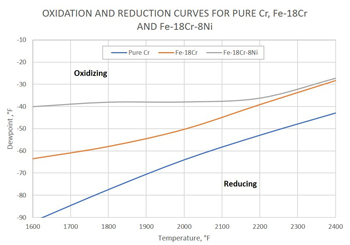metals & materials processing faqs-wepoker官网
can the increased temperature variability in my annealing furnace be causing the ductility variations in my product?
it depends on the amount and location of the variability. variability in the critical annealing parameters—temperature, dew point and atmosphere compositions—can have a dramatic impact on product quality. to help find the source of the variability, record the critical process parameters during production—larger than normal deviations in temperature can affect grain growth, hardness and ductility. then you can correlate poor quality runs to data trends and identify what may be causing the change in properties.
installing a process control system to monitor and control these variables can help you reduce variability. a small investment in control technology can provide a large return in reduced production costs and improved quality. our commercial engineers and extensive experience in process controls can help you improve your process consistency and save money.
how can i increase production flexibility and ensure the quality of my annealed components?
how can i reduce my costs for al-annealing without reducing my quality?
what causes discoloration and oxidation of stainless steels in brazing, sintering or annealing processes?
what causes stainless steel to turn green in a continuous belt furnace?
what is dezincification and how does it apply to thermal processing of brass?
what’s the best approach to select the hydrogen concentration for our nitrogen-hydrogen atmosphere for bright annealing of steels?
我的气体纯度是否适合我的工艺?
我知道我的流量计告诉我我有一定的气体流量,但我怎么能确定呢?
我使用高压气瓶,担心安全。 有没有更好的办法?
how can i prevent copper filler metal from spreading away from the brazed joints in my steel parts?
in furnace brazing, this tendency for the melted copper filler to flash and spread is generally caused by one of four factors:
- your brazing zone temperature is set too high. copper melts at 1984ºf. for carbon steel brazing, the brazing zone should be set at 2050 ±10ºf.
- the reducing power of your atmosphere is too high, caused by too low a dew point or too high a concentration of hydrogen in the brazing zone. for carbon steels in a muffle type furnace, dew points should range from -10ºf to 10ºf, with 5% hydrogen.
- the joint gap is too wide, producing lower capillary forces for the melted copper to flow into the joint; this causes the copper to flow away from the joint.
- the part is in the "hot zone" of your furnace for too long.
is a drier furnace atmosphere always a better furnace atmosphere?
what is dezincification and how does it apply to thermal processing of brass?
what causes discoloration and oxidation of stainless steels in brazing, sintering or annealing processes?
what are the recommended procedures to safely introduce a flammable atmosphere into a continuous belt furnace?
我的热处理工艺需要什么纯度的氮气?
can i determine if the oxidation in the cooling section of my continuous furnace is caused by air ingress or a water leak?
i’m experiencing intermittent oxidation in my furnace. could leaks in the nitrogen houseline be the problem?
how can i achieve a more homogeneous surface hardness in controlled-atmosphere carburizing?
in atmosphere carburized parts, especially bulk loads, variations in surface hardness might appear. this is a common issue caused by insufficient atmosphere circulation inside the furnace chamber and through the load. at air products, our atmosphere flow modelling capabilities enable us to simulate and understand these technical barriers. our technical experts can work with you to find the best way to modify the load set-up, thus improving the carburizing results.
